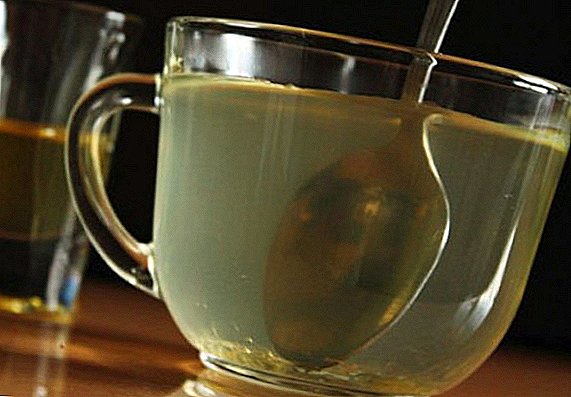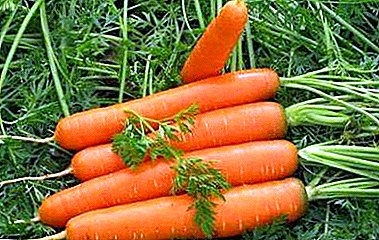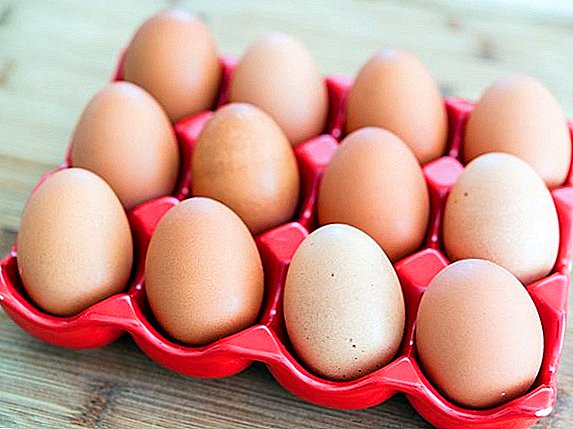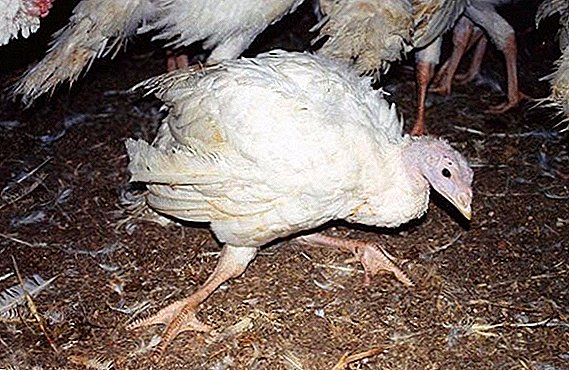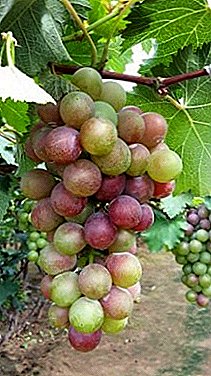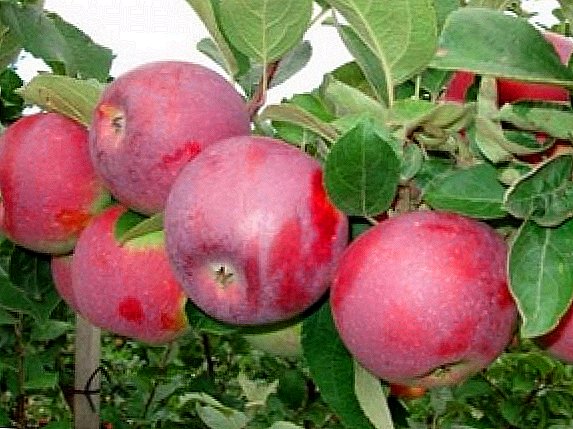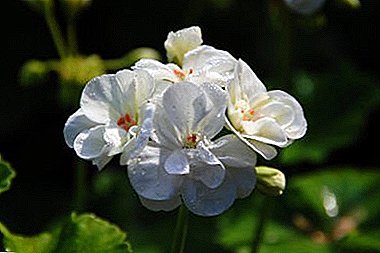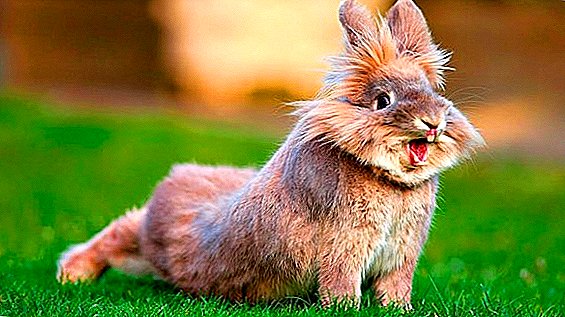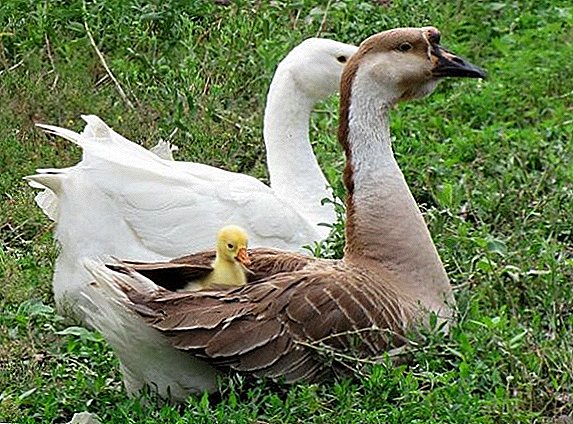 A good breeding goose - a pledge of abundant and high-quality offspring, so it is important not to make a mistake in choosing a manufacturer. Choosing a gander for your herd, you should carefully consider many parameters - physical, social, genetic. The features of this choice will be discussed in the article.
A good breeding goose - a pledge of abundant and high-quality offspring, so it is important not to make a mistake in choosing a manufacturer. Choosing a gander for your herd, you should carefully consider many parameters - physical, social, genetic. The features of this choice will be discussed in the article.
How to choose a good gander on the tribe
It is customary to select the head of the goose family in the middle or even in the second half of autumn. It was at this time that the males are in an excited state and fully demonstrate their character.
Important! A gander must be aggressive enough to protect the flock entrusted to it, but in moderation: its aggression should not extend to the owners and especially their children.
Signs of a true manufacturer that you should definitely pay attention to:
- neck - goose, suitable for high-quality breeding, does not tighten the neck and does not shorten it, this is the lot of touchy or cowardly individuals who will not be able to stand up for their flock if necessary and will not win the favor of females;
- The cupric gland, or "butterdish", located on the tail above - the more valued the goose is, the wider it is, and it is excellent if the "butterdish" turns out to be double;
- "scissors" on the wings - two small pointed feathers speak of valuable leadership qualities, of which the thinner should be longer than that which is wider and in no way the other way round;
- tubercles inside the upper part of the goose beak - the male fertility is higher, the larger the tubercles;
- tail plumage - it is desirable that the number of feathers be more than 20, but at the same time, the male with 18 or fewer feathers has a vanishingly low chances of primacy in the goose family;
- plumage - a good manufacturer is distinguished by even, without creases, feathers, the correct arrangement of the steering feathers folded crosswise on the tail, while the tail itself is horizontal;
- wings - the head of the herd has wings covering its paws, and when it comes, they do not intersect and do not move inwards, but on the contrary, diverge to the sides;
- folds on the abdomen - the right, which ends at the bottom, should be shorter than the left, which lasts until the cloaca, if you look at the bird from the rear angle;
- sympathy of the main female in the herd and other geese - even the most standard male, immaculate in all physical parameters, has no chance of superiority in the herd if the sympathy of the main goose is on the side of another producer.




See also: How to determine the sex of geese
Video: Selecting a goose for a tribe
Careful attention should be given to the presence of all kinds of defectswhich the male can pass to posterity:
- deformity of the beak;
- crooked fingers;
- crooked keel;
- broken wings and the like.
Did you know? Some ancient cultures revered the goose as a divine essence. So, in Tibet, he was considered one of the incarnations of the god Shiva; according to ancient Egyptian mythology, the creation of the world did not go without this wonderful bird; among the ancient Romans, the goose symbolized the martial god of Mars.
By the age of 9 months it should not be less:
- 5 kilogram for Kholmogory breed;
- 4 kilograms for the Chinese.
On average, at the age when a selection is made for a tribe, males should weigh about 7 kilograms, females should weigh about 5.5. 
How many geese should be per gander
When selecting a bird for a tribe in the fall, one should be guided not only by physical signs, but also by the real capabilities of specific individuals.
Important! On average, a good producer with experience is able to maintain 3 and even 4 geese, however, one-fallen people come across, which not every household can afford to keep.
One should not expect immediate performance from a young and inexperienced goose: its possibilities are often limited to one or two wives. If he copes with the task, it makes sense to add a third goose to his flock after two years of age.
However, none of the recommendations will be exhaustive: you should observe the nature of your own livestock and act on the basis of the personal qualities of the individuals. There are so loving hussaks that they are able to "contain" a family of 4-5 wives, but this is quite rare. And if you are lucky to become the owner of just such a breeding goose, it is important to take care to provide it with the right amount of geese.
If there are too many females for a given male and he is unable to serve them, they will carry “empty”, not fertilized eggs.  The established goose families can successfully operate in the same composition for several years, until it is time to change the producer for reasons of improving the breed.
The established goose families can successfully operate in the same composition for several years, until it is time to change the producer for reasons of improving the breed.
Familiarize yourself with the breeds of geese for home breeding: Arzamas, Hungarian white, Toulouse, Rhenish, Danish legart, Tula, Chinese, Linda, large gray.
Recommendations on the selection of pairs for breeding
It is necessary to select candidates for the goose family for breeding taking into account such recommendations:
- If possible, keep the breed clean to ensure healthy and strong offspring for a long time.
- It is necessary to take into account the individual qualities of individuals: their mass, fecundity, character, the absence of external defects, the quality of feathering, and the like, because these are the pedigree properties that they pass on to the future young.
- Admitting to your own geese a new male, one should take into account the hierarchy and preferences of the females, and to a greater degree - the main female. And if she prefers a goose from a neighboring herd, it is better to buy it or barter it from a neighbor and get it for its own breeding needs.

- There will be no benefit from the gander who is driven and beaten by his wives, and the program for breeding chicks will fail. Too aggressive birds that constantly beat and keep other members of the herd at bay should also not be allowed into breeding. There are also “outcasts” of geese who are offended by everyone else: such a bird will not be of any use in breeding business: it should be slaughtered or exchanged for a different farm.
- The ability to form a family in young geese is manifested at six to eight months of age, and females begin to sweep at about ten months of age.
- Ten month old gander can be started to breed, observing the relationships of individuals in the herd.
- It is better to reduce young females with experienced producers in order to quickly start getting strong offspring from them.
Important! Geese are picked from their own flocks, geese are preferable to choose in other farms, and better in other settlements, in order to exclude as much as possible the presence of a relationship between birds.
These tips are advisory, generalized - the final decision should be made after careful observation of the birds, their behavior in the herd and preferences. 
How often should breed males be replaced
The quality of the eggs and the properties of the offspring depend precisely on the males, therefore a good goose producer on the farm is as good as gold. The peak of its reproductive qualities is between two and four years of age, however, most geese are able to fulfill their duties for much longer.
It is interesting to read about the beneficial properties and use of goose meat, fat and eggs.
Do not keep a male in the farm longer than 3-4 yearsAfter all, after this period the risk of closely related relationships greatly increases, which in turn does not in the best way affect the quality of the offspring. Offspring from close relatives — father-daughter, brother-sister, and so on — have poor viability, low productivity, fertility, and other signs of degeneration.

It is not necessary to score a good goose after the expiration date - you can swap males with other gusevodami. It is advisable to try as much as possible to eliminate the possibility of kinship and take a new goose in another settlement, especially if in your village geese graze together: active goose can "spoil the breed" by covering neighboring geese.
Did you know? The penis of a goose is very complex: twisted into a spiral, it has an impressive length that can be equal to the length of its own body. The structure of the female ovary is also very interesting: it looks like a spiral, equipped with several false chambers, in which sperm of unpleasant goose males are recycled, which can seize it against her will.
It is not so easy to choose the right producer - you should take this issue carefully and with all attention, then harmony and harmony will reign in the goose herd, and it will bring you many good and strong chicks.


